Top Ten Attractions to Visit in Delhi
Lying on the banks of the mighty river Yamuna, Delhi takes pride in being the capital of many dynasties. The Delhi Sultanate, The Slave Dynasty, The Khiljis, The Tughlaqs, The Lodis, The Mughals, and The British had ruled Delhi. Delhi is a blend of diverse cultural elements and heritage. Delhi is rich and known for the architecture of the monuments such as Jama Masjid, Qutub Minar, Akshardham, Red Fort and many temples. Apart from the historical places, Delhi is also rich in museums, galleries, gardens and many more. As the capital of India, Delhi also houses government buildings like majestic Rashtrapati Bhavan, The Parliament House, North and South Blocks. For Shopaholics, Delhi is a shopping paradise. The city bustles with local market and shopping malls. Right from the spicy chat to succulent kebabs, you can get any cuisine of your choice.
Here are top ten jewels of the iconic city, Delhi
India Gate
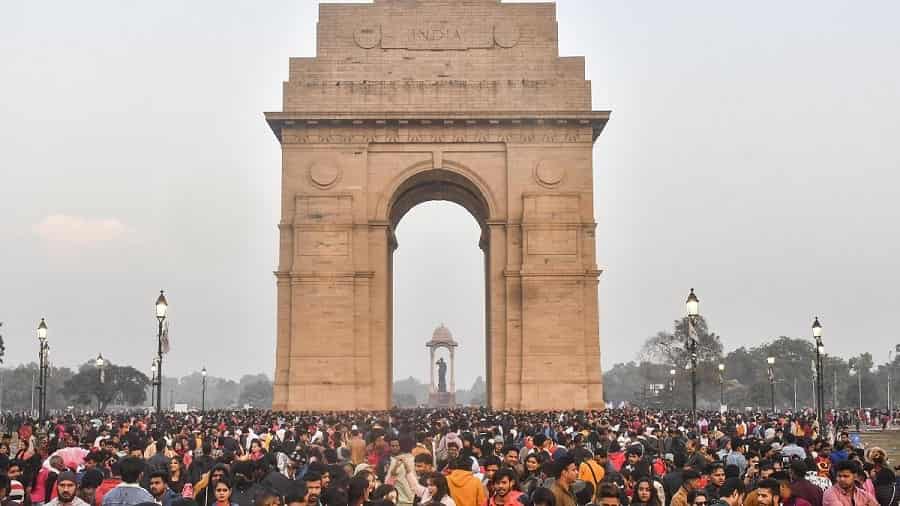
Present in the heart of city, India Gate is the most famous and national monument of the India. The architecture of India Gate was designed by Sir Edwin Lutyens. It was originally named as India War Memorial and commemorates the 90,000 Indian soldiers who lost their lives while fighting for the Indian Empire. The Amar Jawan Jyoti was added later and dedicated to the soldiers who lost their lives in Indo-Pakistan war of 1971.
Red Fort
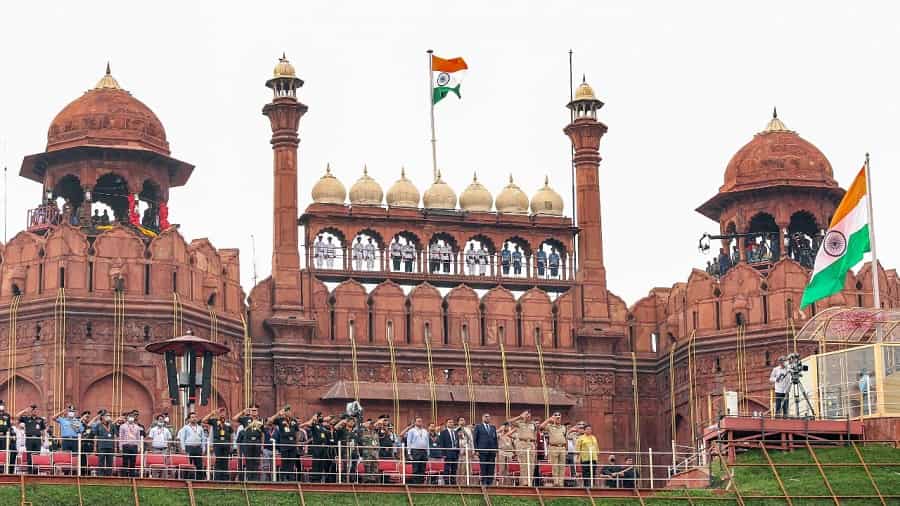
Red Fort is a massive red stone fort situated in Delhi, on the banks of River Yamuna. When Shah Jahan decided to shift his capital to Delhi, he commissioned the construction of Red Fort. It almost took 10 years to complete the construction. Ustad Ahmed and Ustad humid were behind the architecture of the Red Fort. The construction was completed in the year 1648. As there was a much use of red stones in the construction, it was named as Red Fort (Lal Qila). The main gate is named as Lahore Gate which stages the speech of Prime Minister on every Independence Day. Red Fort dates from the very peak of Mughal Empire. Red Fort was added to the UNESCO’s World Heritage site list.
Qutub Minar
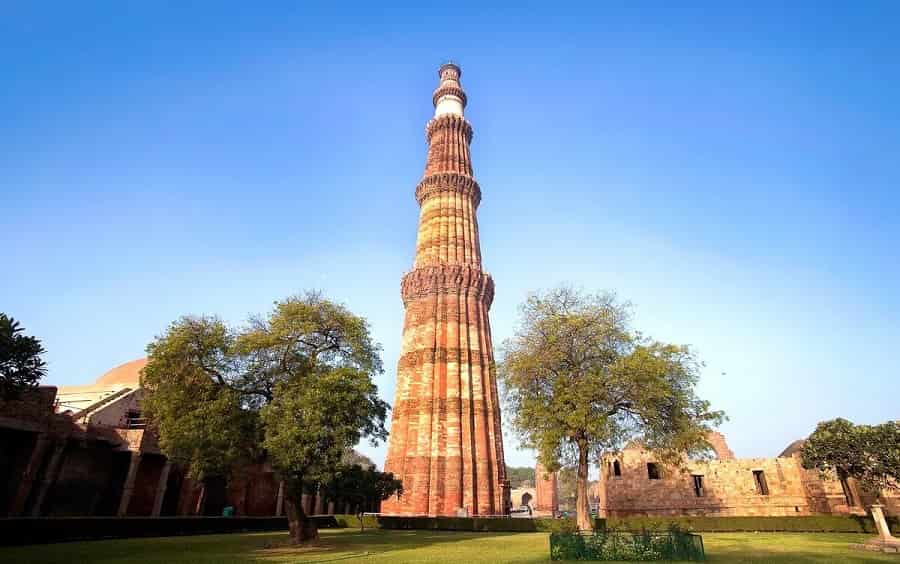
Qutub Minar is a 73 meter high tower and the tallest brick monument in the world. The design was inspired by the early Indo-Islamic architecture. It was built in 1206 as to celebrate the beginning of Muslim dominance in India. The basement of Qutub Minar was constructed by Qitub-ud-Din Aibak, next three storeys were constructed by Iltumish and the remaining two storeys were completed by Firoz Shah Tuglak. One can clearly observe three different styles of architecture in the Qutub Minar.
Jama Masjid
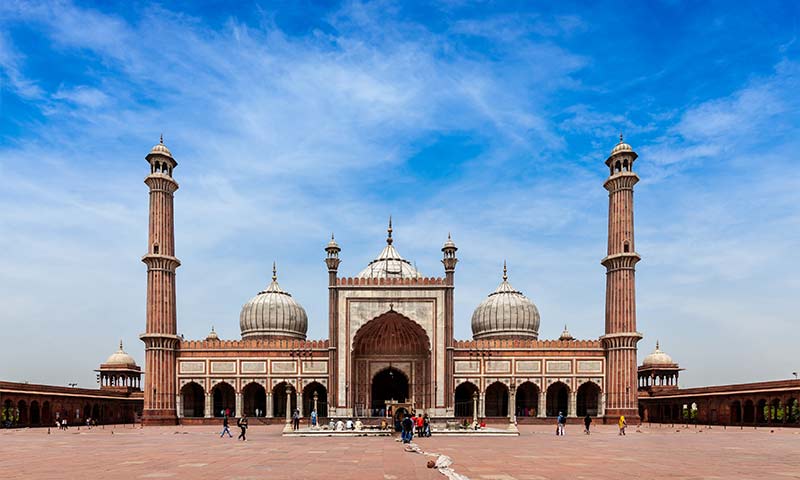
Jama Masjid situated in Old Delhi is one of the largest Mosques in India. It can hold up to 25,000 worshipers. It houses an ancient Quran inscribed on deer’s skin. The entrance of Jama Masjid has high arches that cover the Mihrab. The main prayer hall is topped with white bulbous domes. A pool resides exactly in the centre of the Masjid which is used for ablutions before prayer. The mosques also houses the relics of Prophet Muhammad which include beard hair, sandals, imprinted foot print on a marble slab.
Swaminarayan Akshardham Temple
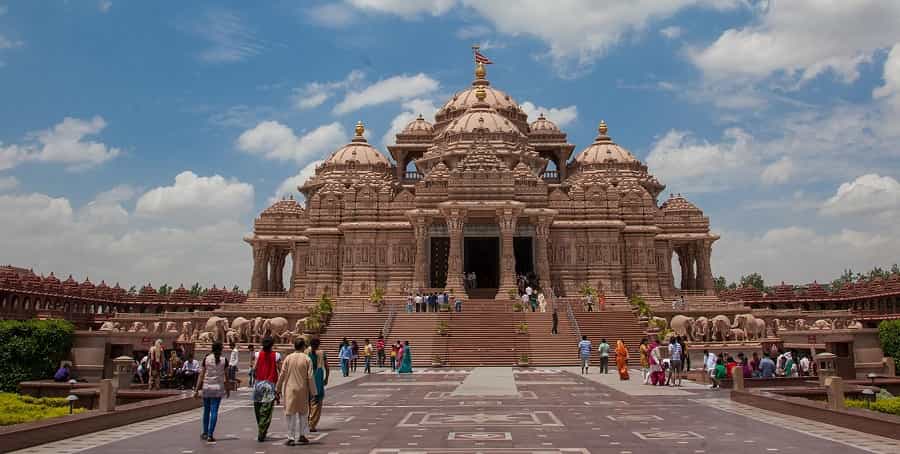
Swaminarayan Aksharadham Temple houses murtis of great personalities, sadhus, archaryas, and devotees of India. The temple is blend of devotions, art, architecture, exhibitions, research and art. The exhibition presents inspiring episodes of glorious history of Sanatan Dharma. The visitor can observe the various facets of Hinduism through these videos.
National Gallery of Modern Art
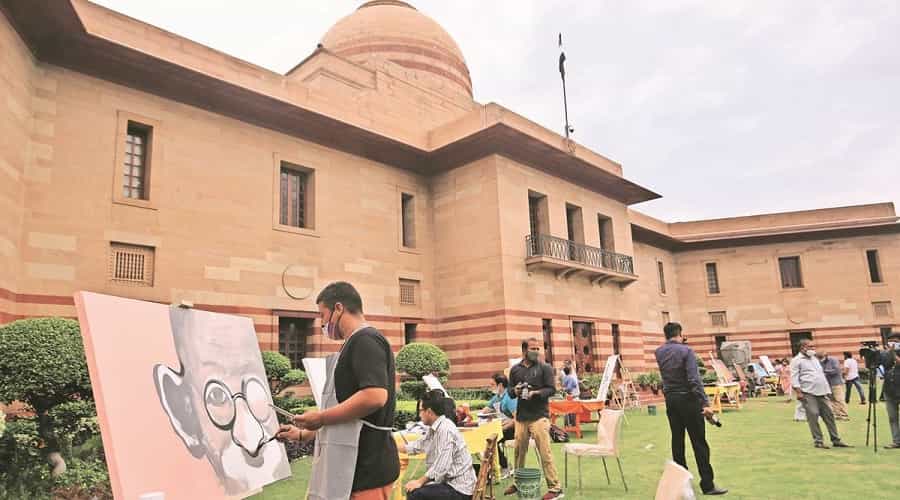
Established in the year 1954, National Gallery of Modern Art is one of the best places to explore contemporary art. Formerly, the building was the residence for Maharajas of Jaipur. The gallery houses a wide collection of paintings which include 10th-20th century paintings. Some of these paintings are more than 150 years old.
National Gandhi Museum
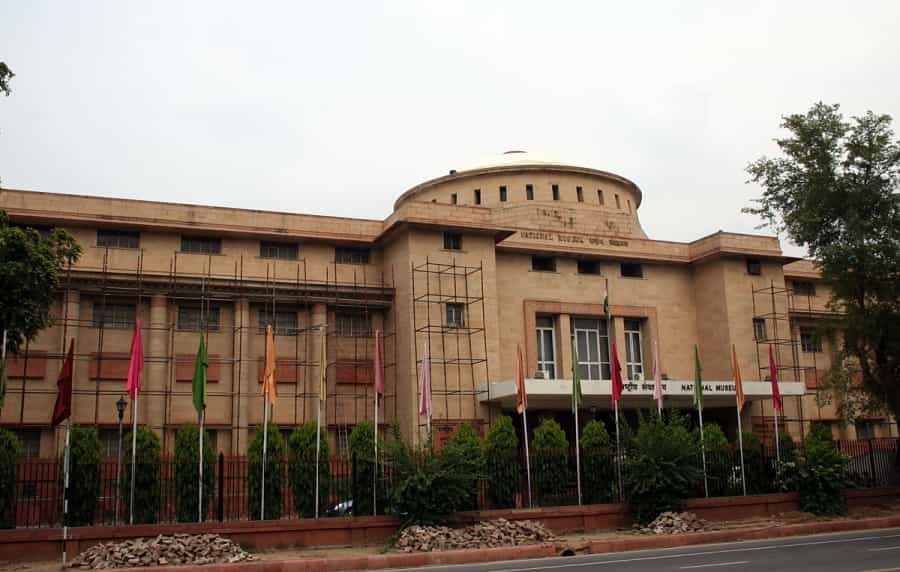
National Gandhi Museum is situated opposite to the Raj Ghat. The museum houses the relics, artifacts, videos, photographs, journals, documents, walking stick and other personal belongings closely connected to Mahatma Gandhi. It is also a research centre for Gandhian. Apart from the books and documents, the museum also exhibits videos on history of India and sculpture of satyagraha movement. The museum also has a library which exhibits books written by, on Gandhi and many other related to him.
National Rail Museum
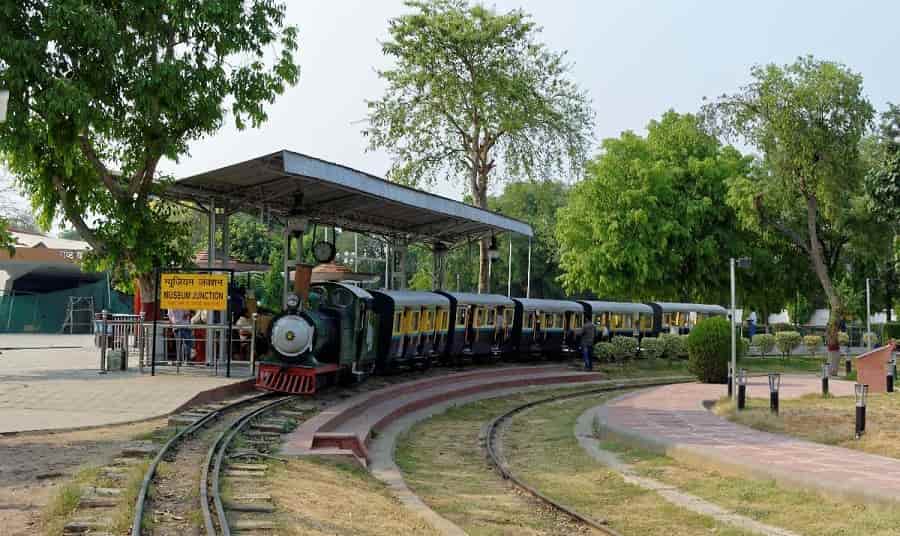
The National Rail Museum was established on 1st February 1997. It is located in Chanakyapuri. The Museum is spread across 10 acres and houses 100 life size trains that belong to Indian Railways. One of the most popular trains of Fairy Queen which was constructed in 1885 is the properly preserved steam locomotives. The museum also houses stationary and working models of trains, equipment used to signal trains. If you are interested to know about the history and heritage of rails in India, then a visit to National Rail Museum is a must. You can also avail the chance to visit the display of Prince of Wales Saloon, Viceregal Dining Car and Maharaja of Baroda’s saloon in working condition. Especially kids will enjoy a lot in National Rail Museum. You can also enjoy a joy ride in the mono rail and boating.
Shantivan
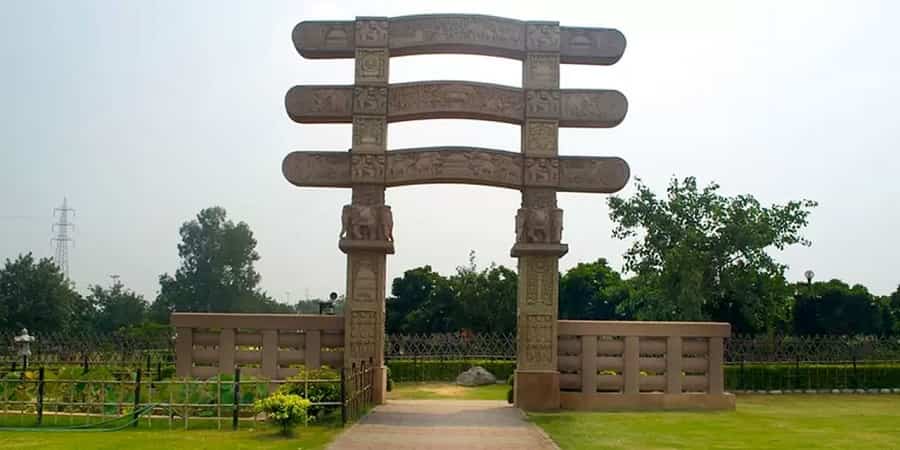
Shantivan is the cremation lace of India’s First Prime Minister, Jawaharlal Nehru. Shantivan means a forest of peace. It is located to the north of Raj Ghat. The area is beautifully adorned with trees and plants. The Shantivan is visited by the dignitaries and heads of state and whoever wants to offer their respects. Special prayers, cultural programs by children take place during the birth and death anniversaries of Jawaharlal Nehru. For peaceful environment this area was named as Shantivan.
Delhi is a collection of different cities in one. Visit to Delhi will surely impress you with its attractions, versatility and diversity. For food lovers, Delhi is delight. The trendy restaurants will serve you continental, Italian, Chinese and other cuisines. Packed with tradition and history, Delhi will surely inspire you. The diversity here is evident in social and cultural gatherings.